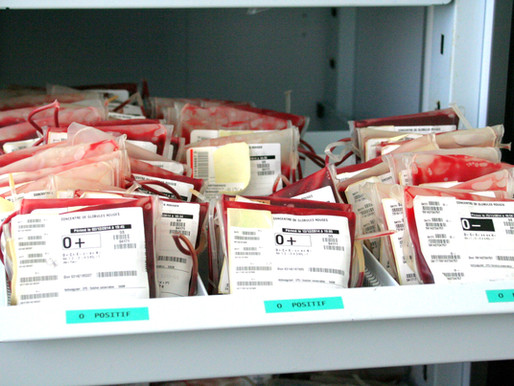Quality, compliance and excessive costs all contribute to the efficiency and integrity of the blood supply chain
A major part of the challenges of today’s blood supply chain is maintaining uniform temperatures for long durations during storage and transport of blood products. As shown in Table 1, different blood products must be maintained within extremely precise temperature ranges.
Yet the transport and storage systems used by many blood banks and hospitals today are not well-designed to achieve the goals set out in this table.

What’s Wrong with Most Blood Packaging Used Today
As primary packaging, blood banks and hospitals mainly use cardboard boxes lined with polystyrene insulation, or molded plastic coolers from consumer vendors such as Igloo and Rubbermaid.
Most of these grocery market coolers are not designed for precision insulating, so they have non-uniform temperature distribution with hot and cold zones within them.
The main cooling material used during transport of refrigerated products (whole blood, packed red blood cells) is bagged crushed ice or gel packs which often require preconditioning, leading to delays and slower response time. Most of the platelet shippers currently in use rely on regular gel packs to maintain payload at controlled room temperature (+20 to +24C).
The many drawbacks to these existing materials fall into three main categories:
- Quality issues
- Compliance issues
- Excessive costs, when factoring in shipping, compliance, and wastage
Quality Issues
Limited capacity: Igloo, Rubbermaid or similar coolers used by hospitals for internal transport are made from high-density plastic lined with 1.5- to 3-inch foam insulation, and then filled with crushed ice. This leaves only 20% to 30% of usable volume in which blood products can be placed.
Poor thermal performance: Traditional packaging uses Styrofoam (R3 to R4 per inch) or polyisocyanurate (R5 to R7) insulation. While these are inexpensive, they provide limited performance in demanding settings, such as longer transport times, or at the bedside of a patient who requires continuous lower-volume transfusions.
Lack of flexibility: Different blood products require different temperature ranges for packaging. The insulation, cooling material, and pack-out must be varied based on the type of blood product being packaged and transported. In simple terms, one size does not fit all.
Yet the existing materials used by blood banks and hospitals have little flexibility to size up or down according to the requirements of each shipment. This adds inefficiencies and higher costs.
Compliance Issues
Arbitrary set of materials: Many blood banks and hospitals today use an arbitrary collection of packaging materials that requires an extensive set of pack- out evaluations. A pre-validated system of integrated packaging and components would be faster and simpler to evaluate.
Primitive materials: According to William Laboratories, “In our March 2012 survey of over 70 blood banks, many respondents generally described cooler validation as a ‘pain,’ characterizing it as time-consuming, frustrating and even primitive”[1].
Time-consuming tests: Technicians and blood bank supervisors must spend a considerable amount of time evaluating different pack-outs (coolers, ice packs, cardboard boxes, plastic shells, and trolleys) from different sources. They must spend many hours (in some cases 50 to 100+ man-hours) running multiple tests to qualify a system and comply with FDA/AABB standards. And to remain compliant, they must conduct periodic test runs every 6 to 12 months.
Excessive Costs
Shipping: Blood banks typically use cardboard boxes, lined with insulation panels and 10 to 20 lbs. of crushed ice per box. This increases the weight and the shipping cost.
Note that shipping companies charge based on dimensional weight, so that packaging design should be optimized for both the size and weight of the container. The combination of limited capacity, limited thermal performance and heavy crushed ice often requires boxes to be shipped overnight, which increases the costs.
Even though the current packaging system is inexpensive, the total cost (packaging + shipping + product wastage + compliance) is very high. An optimized pack-out design should reduce product wastage, while significantly reducing shipping costs.
Advanced materials not designed for blood: A few vendors offer expensive vacuum insulation panel- based packaging (VIP), R-20 to R-40 per inch. But VIP is relatively fragile, heavy, and cost-prohibitive for high- volume applications such as blood banks or hospitals.
This high-end design is best-suited for transporting more costly or irreplaceable items such as pharmaceuticals, bio-samples, and organs for transplant [2]. As you can see, the materials being used by main blood banks and hospitals today are less than ideal.
Sources
1: Cooler Validation Survey Results 2012. Temptime Corporation. 20 March 2012.
2: Advantages and Disadvantages of VIP in Insulated Shipping Packages. Sofrigam. 26 August 2013.




